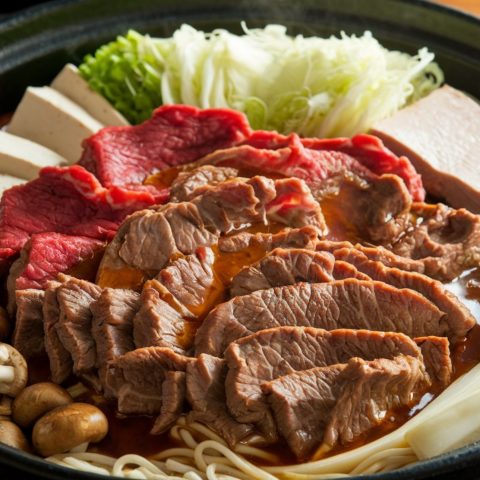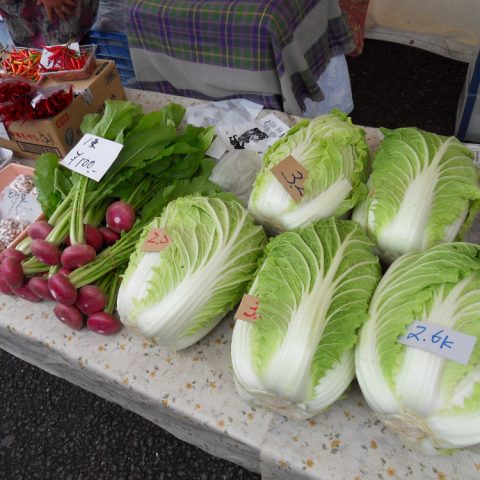
Hello, my name is Ray. I am a food tour guide at Arigato Travel in Japan. I recently visited the Washoku: Nature and Culture in Japanese Cuisine 2023-2024 exhibition, a special event that showcases the nature and culture of Japanese cuisine. I was amazed by the diversity and richness of the food and the history behind it. I would like to share with you some of the highlights of my experience.

A reproduction model of the honzen meal that Oda Nobunaga treated Tokugawa Ieyasu – Photo credit: Official website
One of the most impressive displays was the rice section, where I learned about the different types of rice grown and consumed in Japan. Rice is the staple food of Japan and has been cultivated for over 2000 years. It is not only a source of nutrition, but also a symbol of life and harmony. I saw a photo of a rice field in Hokkaido, the northernmost island of Japan, where hardy varieties of rice are grown to withstand the cold climate. I also learned about the various products made from rice, such as sake, vinegar, flour, and bran. Rice is used to make many dishes, such as sushi, onigiri, mochi, and sekihan. I was fascinated by the different shapes, colors, and flavors of rice dishes that were displayed as plastic models. They looked so realistic and delicious that I wanted to try them all.

A display of fish and seafood – Photo credit: Official website
Another display that really impressed me was the seafood section, where we were presented with various fish, shellfish, and seaweed harvested from the ocean. Japan is surrounded by sea and has a long tradition of fishing and aquaculture. Seafood is an essential part of Japanese cuisine, as it provides protein, minerals, and omega-3 fatty acids. I saw some of the most popular seafood in Japan, such as tuna, salmon, mackerel, shrimp, squid, and octopus. I also saw some of the most exotic and rare seafood, such as shark, pufferfish, sea urchin, abalone, and geoduck.

Atlantic bluefin tuna – Photo Credit: Ray
I was astonished by the size and shape of some of the seafood, especially the life-size models of the biggest crab and the biggest tuna in the world. The Japanese spider crab can grow up to 40 centimeters (16 inches) in carapace width and weigh up to 20 kilograms (42 pounds). The Atlantic bluefin tuna can reach up to 3 meters (9 feet) in length and weigh up to 700 kilograms (1500 pounds). I couldn’t help but wonder how they would taste and how they would be prepared.

A display of edible seaweed – Photo credit: Science Japan
The last display that I visited was the seaweed section, where I discovered the diversity and beauty of the marine plants that are eaten in Japan. Seaweed is a valuable source of vitamins, minerals, and fiber, and has many health benefits. It is also used to add flavor, color, and texture to many dishes. I saw some of the most common seaweeds in Japan, such as nori, wakame, kombu, and hijiki. The exhibit also displayed some of the more unusual seaweeds, such as mozuku, mekabu, and umibudo. I learned about the different ways to harvest, process, and cook the various kinds of seaweed. I was impressed by the variety and creativity of the seaweed dishes that were displayed as plastic models, which ranged from simple salads and soups to elaborate sushi and desserts.
I had a wonderful time at the Washoku 2023-2024 exhibition, and I learned a lot about Japanese food culture. I hope you enjoyed reading about my experience and that you will have a chance to visit the exhibition yourself. If you are interested in joining me on a food tour in Japan, please visit the Arigato Travel website and book your trip today. Thank you for reading and happy eating!
Find out more about the Washoku 2023-2024 Exhibition here: https://washoku2023.exhibit.jp/en.html
Featured photo by Ray
To learn more about fresh fish and try some for yourself, book our Classic Tsukiji Breakfast Tour to enjoy a trip around the market with our expert guides!



